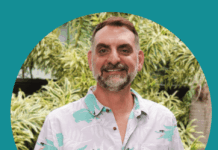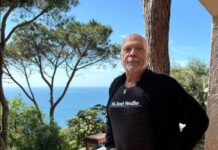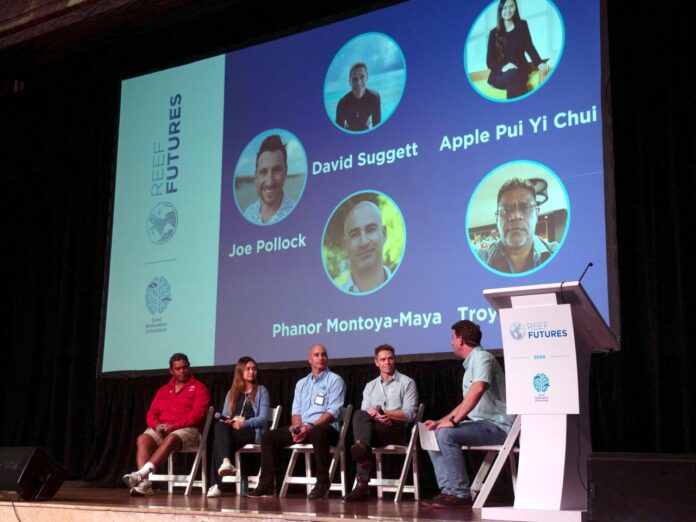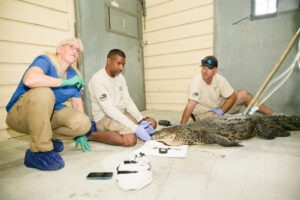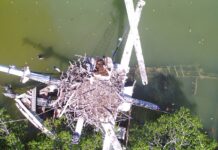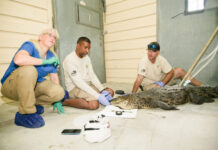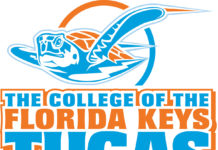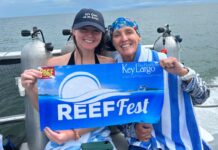In summer 2023, the Florida Keys was hit by a devastating heat wave. It bleached and killed much of our coral reef and threatened the survival of many other marine species. The story made major and global headlines, and left many coral restoration practitioners stripped of their most vital resource: hope.
“Over the past few months, I’ve struggled with doubts — witnessing setbacks and seeing fellow restoration practitioners lose hope left me questioning my career and even considering early retirement. But attending Reef Futures changed everything,” wrote Coral Restoration Foundation’s (CRF) Reef Restoration Program Manager Phanor Montoya-Maya in a recap of the event.
In mid-December, reef scientists, ocean advocates and self-professed coral nerds descended on the Riviera Maya, just outside of Cancún, Mexico for Reef Futures 2024. The “it” event in coral restoration, this global symposium focuses solely on the interventions and actions necessary to allow coral reefs to thrive into the next century.
Held approximately every two years, the inaugural two iterations of this conference were hosted at Ocean Reef Club in the Keys. This year, they went international to allow for more widespread and equal participation. Fittingly, the theme was: “restore the reef, restore ourselves.”
Keys Weekly caught up with several Keys’ leaders in Mexico about what local knowledge and innovations they’re bringing to the global conversation and what they’re bringing back.
JD Reinbott, the Iconic Reef Guardians stewardship coordinator for the National Marine Sanctuary Foundation, talked about “how we adapted to overcome the challenges that our corals faced at a time when it felt like all was lost.” Alluding to the 2023 bleaching, he added, “These stories were not shared in silence.” Instead, stories like Reinbott’s, of loss of corals from around the world, were met with empathy, acknowledgement, and, more importantly, creative and collaborative brainstorming.
In sharing about loss, Andrew Ibarra, the NOAA Marine stewardship and monitoring specialist for the Florida Keys National Marine Sanctuary, urged other scientists to use photos to illustrate their work and help others connect, saying, “communicating our science to the public can be bridged through the storytelling power of photography.” He was one of the first people in the field to visually share what was happening in 2023; his efforts catalyzed global attention on the Keys.
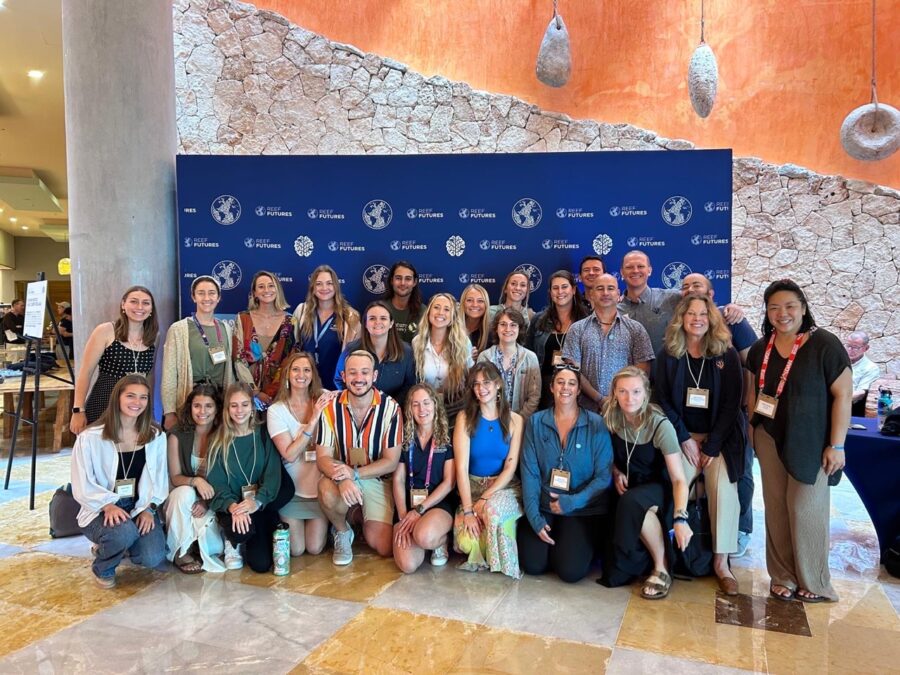
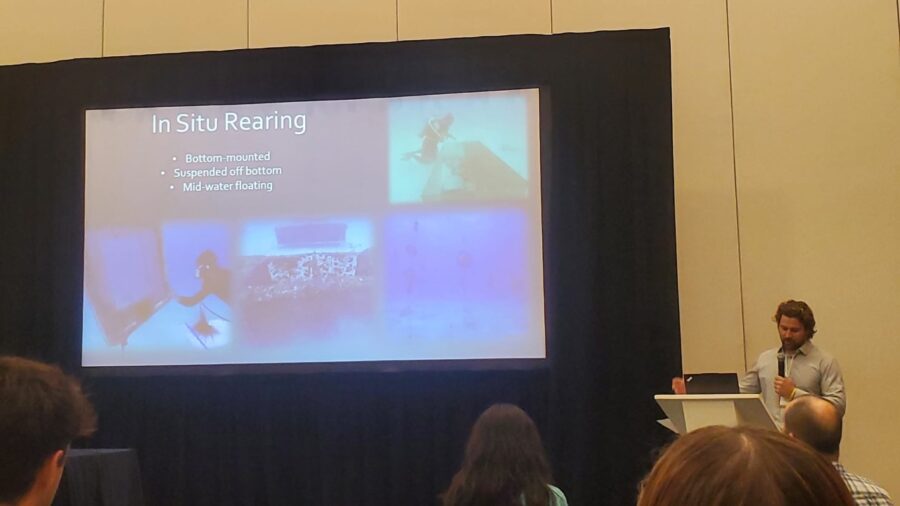

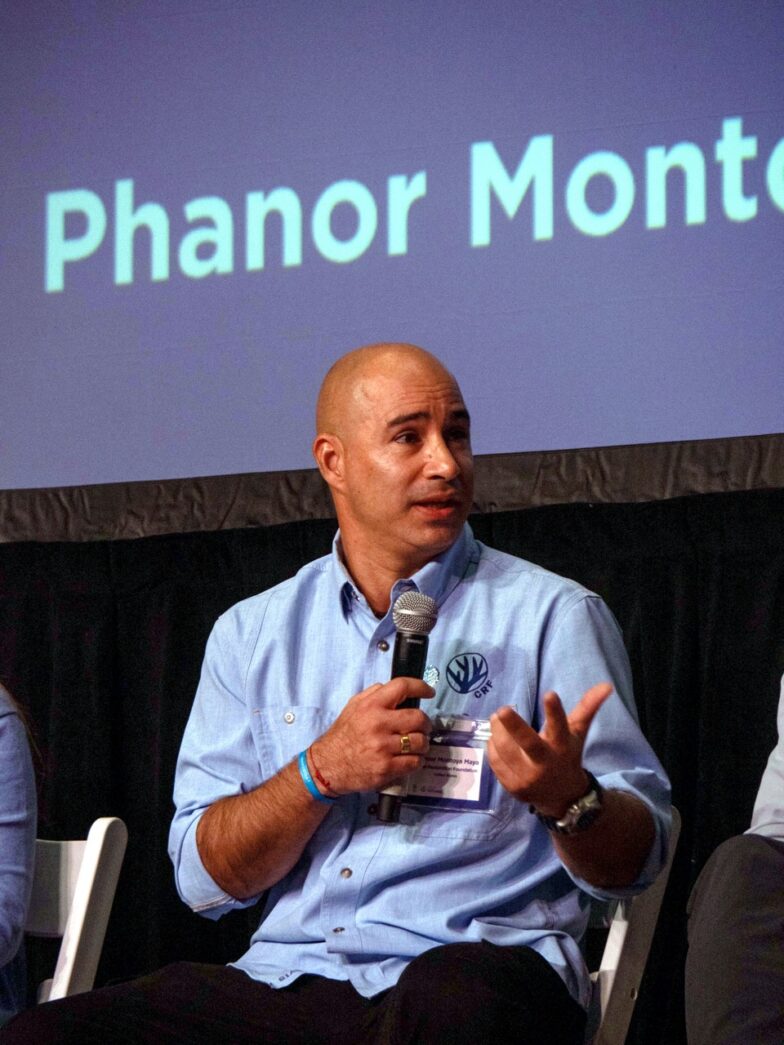
Scientifically iterating upon 2023, Montoya-Maya spoke of the resilience model for coral restoration programs necessary to endure uncontrollable disturbances and on the critical role of gene banking to preserve genetic diversity. The CRF team also debuted CeruleanAI, their new open-access learning ecosystem that is meant to empower broader participation in reef restoration.
Plant a Million Corals’ co-founder and director of communications and development Dee Dee Vaughan Smause noted how, at the 2022 symposium, the organization was weeks away from the grand opening of their Summerland Farms facility. At this 2024 event, they celebrated hitting a mega milestone of growing over 40,000 corals and the development of new technology to make coral restoration faster, more affordable, and more sustainable.
Finally, Jim Brittsan, the founder/director of Sustainable Ocean and Reefs Inc. (SOAR), showcased his baby urchins. Since completing his CRF internship, Brittsan has spearheaded the Tropical Western Atlantic’s first in situ invertebrate reef grazer nursery, which he spoke to at Reef Futures. His model of reef restoration is more holistic and contemplates restoring the entire ecosystem, starting with urchins. He said, “we wanted this to be shared so that others could implement this work in other parts of the world.”
As for what they’re bringing back from Mexico, answers ranged from the practical to the more motivational. CRF’s Reef Restoration coordinator Sam Burrell said, “Because coral restoration is still relatively new as a field, CRF was able to add to our toolkit through attending workshops and lectures from global restoration groups and experts in the field.”
New partnerships are also on the horizon. Smause added that, by being in person together, “We were able to have conversations about old and new programs in ways that would not otherwise have been possible.”Brittsan said, “Honestly, the best thing I’m bringing back is the positive drive to not give up and keep moving forward. This event greatly impacted my mental health in the most positive way.” Montoya-Maya perhaps summed it up best in his recap: “Reef Futures restored more than my motivation; it restored my belief that what we’re doing is having an impact. Let’s embrace the complexity, the challenges, and the opportunities—because, in restoring reefs, we might just restore ourselves.”


